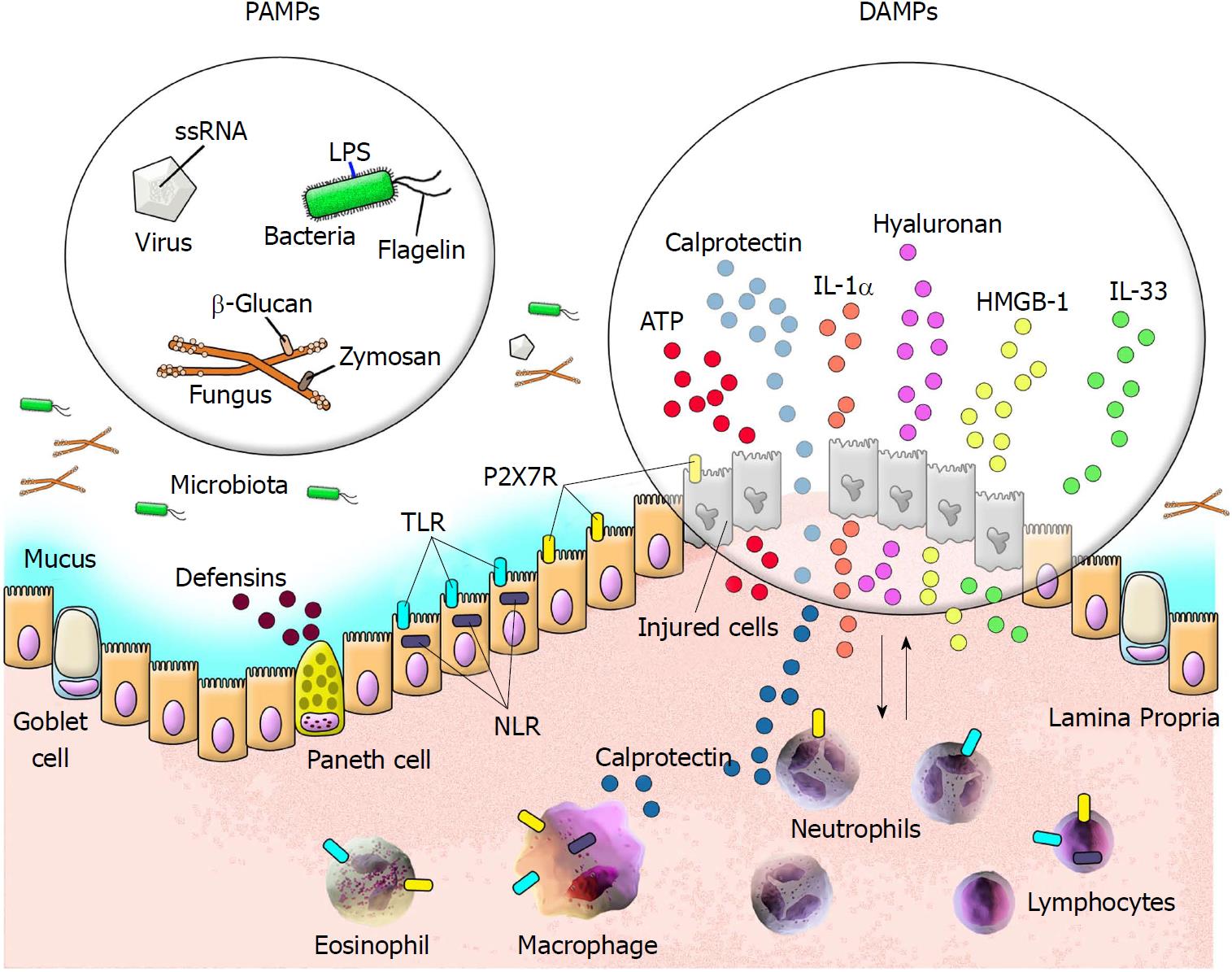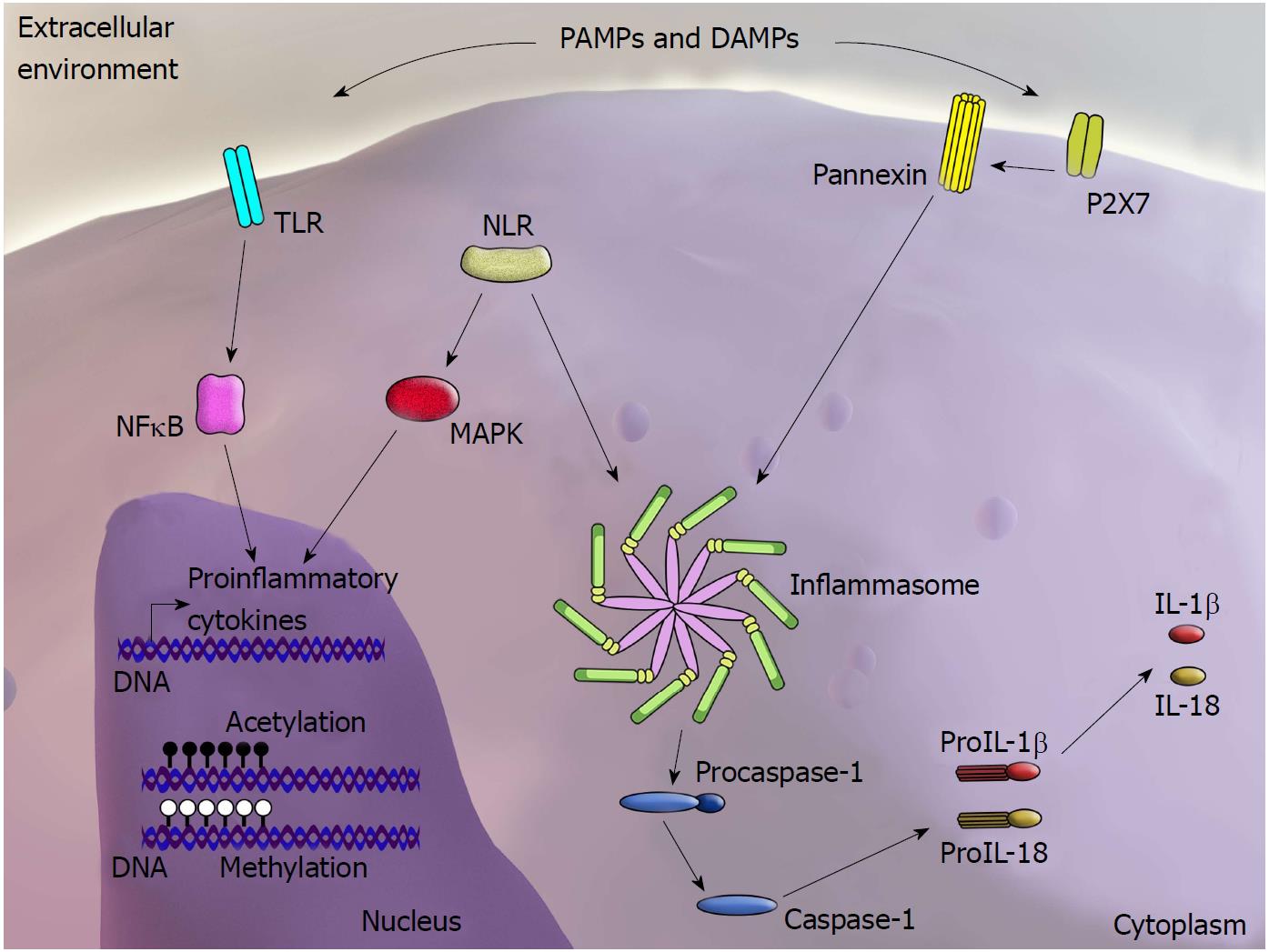Copyright
©The Author(s) 2018.
World J Gastroenterol. Nov 7, 2018; 24(41): 4622-4634
Published online Nov 7, 2018. doi: 10.3748/wjg.v24.i41.4622
Published online Nov 7, 2018. doi: 10.3748/wjg.v24.i41.4622
Figure 1 Participation of pathogen-associated molecular patterns and damage-associated molecular patterns in the induction of inflammatory responses in the intestinal mucosa.
Pathogens such as viruses, bacteria and fungi present pathogen-associated molecular patterns that are able to stimulate cellular receptors such as toll-like receptors and nucleotide-binding and oligomerization domain-like receptors to promote the production of proinflammatory cytokines and recruitment of inflammatory cells. Upon tissue damage, injured cells release molecules known as damage-associated molecular patterns into the extracellular milieu to further stimulate and amplify the inflammatory response. TLR: Toll-like receptor; NLR: NOD-like receptor; IL: Interleukin; ATP: Adenosine triphosphate; DAMPs: Damage-associated molecular patterns; HMGB: High mobility group box; LPS: Lipopolysaccharide; PAMPs: Pathogen-associated molecular patterns.
Figure 2 Intracellular signalling via damage-associated molecular patterns.
Multiple mediators released by dying or stressed cells provide a secondary signal to amplify immune and inflammatory responses. Damage-associated molecular patterns (DAMPs) can activate proteins such as the purinergic receptor P2X7. P2X7 is capable of activating pannexin-1, a membrane channel involved in activation of the multiprotein inflammasome complex, promoting the inflammatory response. Immunological memory may develop via epigenetic reprogramming after exposure to pathogen-associated molecular patterns or DAMPs. This functional adaptation of the immune system may directly exacerbate inflammatory responses upon subsequent challenges. TLR: Toll-like receptor; NLR: NOD-like receptor; IL: Interleukin; NFκB: Nuclear factor kappa B; MAPK: Mitogen-activated protein kinase; PAMPs: Pathogen-associated molecular patterns.
- Citation: Nanini HF, Bernardazzi C, Castro F, de Souza HSP. Damage-associated molecular patterns in inflammatory bowel disease: From biomarkers to therapeutic targets. World J Gastroenterol 2018; 24(41): 4622-4634
- URL: https://www.wjgnet.com/1007-9327/full/v24/i41/4622.htm
- DOI: https://dx.doi.org/10.3748/wjg.v24.i41.4622










